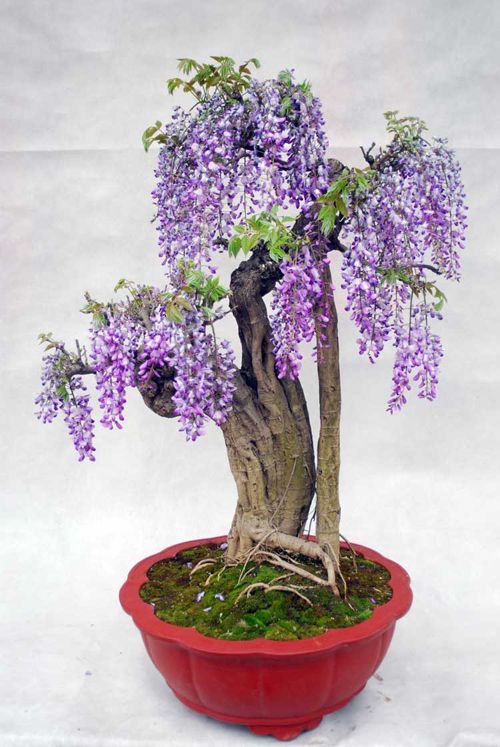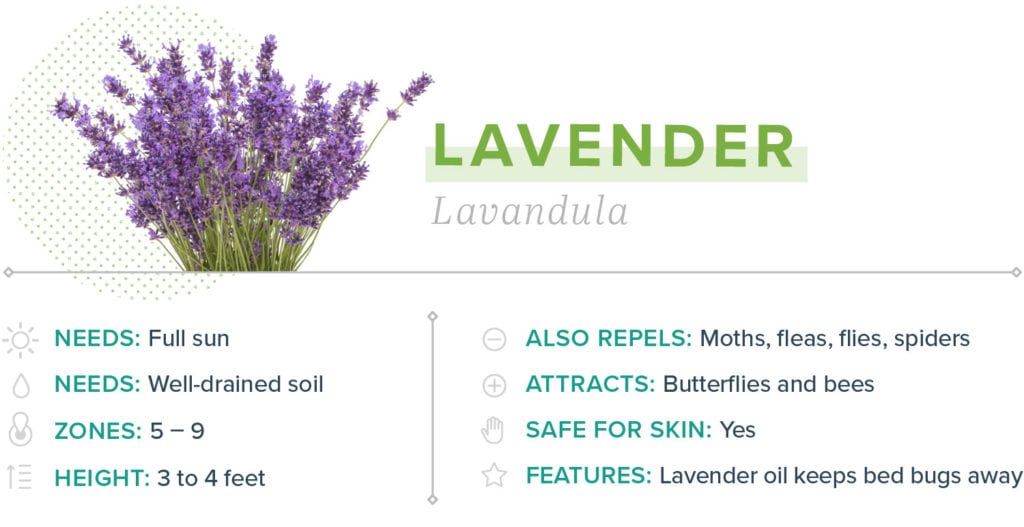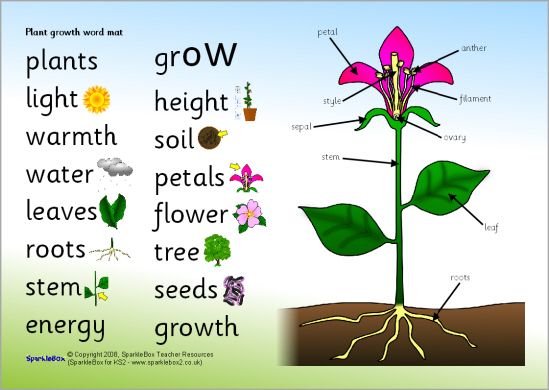Small wisteria tree
Rethinking Its Place in Small Home Garden Design
Vine choices in the garden? Does it matter?
Yes! And wisteria is a giant. A vine known to swallow landscapes and buildings (I saw this first hand just outside Buenos Aires, Argentina).
But, what about wisteria’s potential and place in a small space or garden? (25 photos below.)
Is it possible for you to enjoy this amazingly gorgeous, sweetly fragrant bloomer despite its desire to take over your property…
All wisteria have similar climbing habits making them good for walls, arbors, pergolas, or grown in bush or tree form.
Very positive!
But, what about a wisteria for your small garden, or even a large pot?
Yes!
Here’s why:
You Can Restrict Wisteria’s Size with Spur Pruning. This Avoids the Rampant Growth and Doesn’t Effect Flowering!
I’d say treat wisteria (in the small garden) like the prized specimen it is. This will keep you realistic about training, growing and maintaining, which is best done with planning.
Wisteria Can Turn Into an Exhausting (Non) LOVE OF LABOR
Don’t let this happen!
Be realistic. Growing/training/maintaining wisteria is a labor of love, but, can quickly turn into an exhausting (non) love of labor. Ask yourself these questions first:
- Growing location – Where do you want to grow it? Wall, fence, wall shrub, large container, espalier or on a structure like an arbor or pergola.
- Commitment level – Is it worth it? Growth can become a tangled mess during the growing season. Factor in keeping this vine under control with a minimum pruning 2-times per year, summer and winter. Prune back to 6″ in July; shorten to 2 to 3 buds in December or January. Keep in mind that pruning controls growth, which keeps wisteria neat and enables you to restrict size.

- Wisteria forms – Your preference? (1) vine (2) tree (3) bush.
Final Question:
After assessment. Are you on board with training + annual maintenance pruning this vine requires?
Q: Wisteria Tree or Vine? What’s Best for a Small Garden?
A: It depends. Both work, let’s have a look…
Wisteria Tree – Thumbs up to this priceless addition to the small garden! In bloom it’s breathtaking and fragrant. You could grow one in a large pot, too, so don’t be shy! Take a look below (photo #13) of a wisteria tree just beginning to flower.
Wisteria Vine – Like the tree wisteria, this can also be a wonderful addition to the small garden. I’d recommend 1 to 2 vines for a pergola. And no, not a problem, just stick with the recommended training and pruning. You train initially with 3 stems and prune back other growth to 3 to 4 leaflets. A wisteria wall espalier is a personal favorite but it can be a bit more technically challenging. Take a look below at the espaliered vines, one on each side of the garage ( photo #2. ) Trained with a permanent framework using spur pruning this wisteria is kept very neat and flowers beautifully every spring (photo #18.) So, if you have a small space and like this aesthetic, espalier or wall shrub is an excellent way to go. And finally, take a look at the numerous photos below to see how wisteria is grown and trained in the small home garden.
Take a look below at the espaliered vines, one on each side of the garage ( photo #2. ) Trained with a permanent framework using spur pruning this wisteria is kept very neat and flowers beautifully every spring (photo #18.) So, if you have a small space and like this aesthetic, espalier or wall shrub is an excellent way to go. And finally, take a look at the numerous photos below to see how wisteria is grown and trained in the small home garden.
Tip: See horizontal vine training wire method here.
About Wisteria Vines
Wisteria is a deciduous, woody stemmed vine. A twining and vigorous habit with fast growth is synonymous with wisteria. With age wisteria’s size increases as does its weight, which will grow substantially thicker and more woody. It’s very important to match a durable support structure and hardware to this plant’s future weight where necessary. Adequate support, like a metal trellis (photo #4, #12 ) or wooden arbor (photos #7 -9) can make an excellent marriage with this vine as well as add to the design.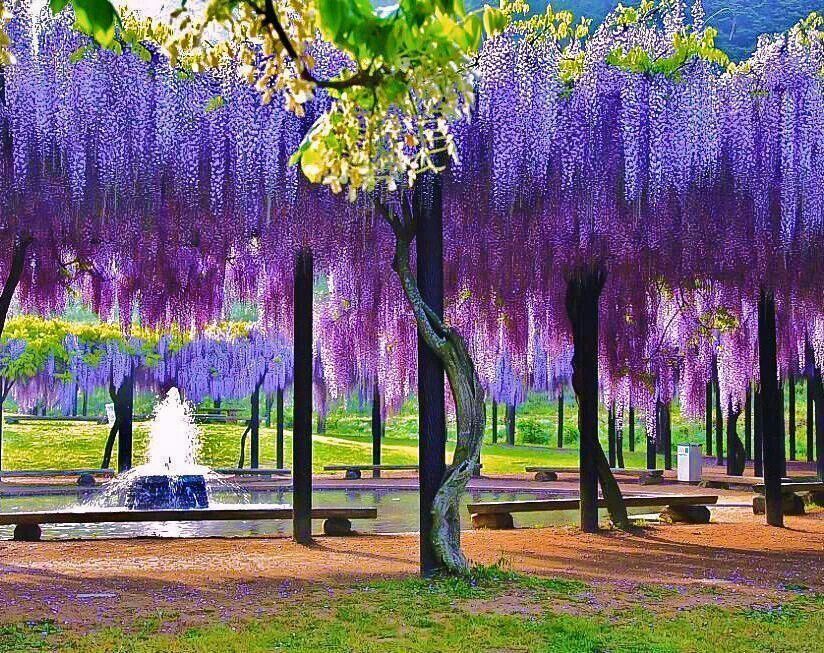
Wisteria has extremely showy, large, cascading flower clusters. Flowers are strongly fragrant, drooping on long racemes. Flower size: anywhere from 8 to 24 inches long. Flower color: blossoms range from violet, blue-violet, white and pink. Flowers festoon in abundance whether growing up arbors, trellises, upon walls as an espalier or in tree form. Bloom time: spring in SF Bay area -March, April, May. In colder climates, a bit later. Most wisterias will bloom within three to four years after planting. Because wisteria is in the Pea family, interesting seed pods form after flowers fade. Note: Seed pods are poisonous.
Most Popular Wisteria Vines
(1) Chinese wisteria (Wisteria sinensis) – Chinese wisteria typically have shorter flowers up to 12″ long which usually open all at once. Chinese wisteria twines counterclockwise, and new foliage is often bronze, turning green with age. Flower color: Bluish-purple, mauve and white.
Flower color: Bluish-purple, mauve and white.
Popular varieties: ‘Blue Sapphire’ ‘Amethyst Falls’ most powerfully and sweetly fragrant; ‘Caroline’ and ‘Cooke’s Special Purple’
(2) Japanese wisteria (Wisteria floribunda) Japanese wisteria flowers tend to be longer and open later than their relative – the Chinese wisteria. They also frequently bloom while their leaves are forming and twines clockwise.
Popular varieties: ‘Snow Showers’ ‘Black Dragon’ ‘Hon-Beni’ ‘Kuchi Beni’ and ‘Blue Moon’
(3) American wisteria (Wisteria frutescens) American wisteria grows in eastern United States from Texas to Florida and north to New York. Short lavender flowers are lightly scented. Bloom time is in summer, later than other species. Growth is less vigorous than Asian species, but still gets big given time. Size: 8-10′ in 3 years; 30′ given time. Sun-part shade. Zone 5.
Popular varieties: ‘Nivea’ ‘Kofuji’ good for bonsai; ‘Lavender Lace’
Wisteria Trees
Buying a Wisteria tree (trained as a standard) is the way to go if you want instant gratification. You can also train your own. If your local nursery sells a wisteria tree (typically 5 or 15 gallon size) a grafted base grows like a small tree. Two wisteria tree examples are:
You can also train your own. If your local nursery sells a wisteria tree (typically 5 or 15 gallon size) a grafted base grows like a small tree. Two wisteria tree examples are:
‘Cooke’s Purple’ Std. or ‘Carolyn’ Std.
Mature size: 12-15′ tall x 6′ wide.
How to prune: Same pruning, summer and winter, is used to maintain framework. More pruning will probably be needed to control growth of long twining branches produced in summer. Note: Branches have a crooked form, which is natural. If training, you want those branches to radiate out from the center. Support: Tree wisterias often need support. A wooden stake or heavy steel pipe are pretty common. These will be necessary as head grows and trunk expands. Where to grow a tree wisteria? Large pot… or use as a focal point in garden bed or border. (Photos #13, -15)
Photos: How Wisteria is Grown and Trained in the Small Home Garden
#1 – Wisteria buds winter, San Francisco , CA
#2 – Wisteria vines (espalier) spur pruned above garage.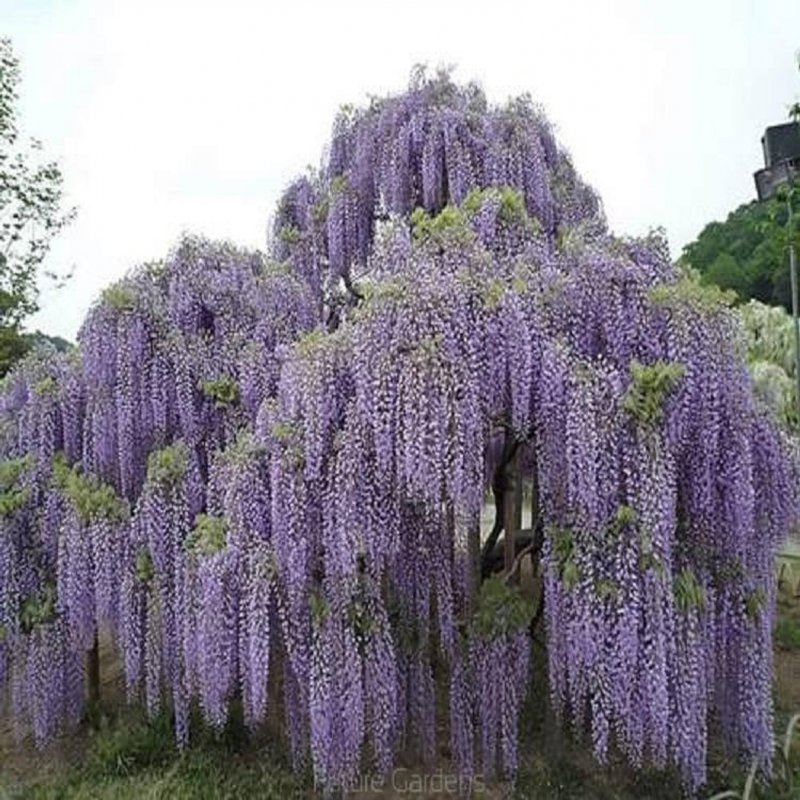 San Francisco, CA. (See #18 detail in bloom.)
San Francisco, CA. (See #18 detail in bloom.)
#3 – Tree like form of wisteria in winter with modern home and support. (See this wisteria in bloom, photo #14). San Francisco, CA
#4 – Wisteria spur growth detail above front metal entrance gate. San Francisco, CA. Branches furnished with a spur system.
#5 – Wisteria in Winter. Oakland, CA
#6 – Beautifully trained wisteria in winter. Oakland, CA. (Still with seed pods, could use some winter shoot shortening)
#7 – Arbor with wisteria in winter. Plumpjack Winery. Napa, CA. See heavy trunks?
#8 – Wisteria – gorgeous contorted with sculptural woody stems in winter. Plumpjack Winery. Napa, CA.
#9 – Seating beneath wisteria arbor in winter. Plumpjack Winery. Napa, CA. Strong supportive structure.
#10 – Wisteria ‘Amethyst Falls’ starting to flower. San Francisco, CA. March 12, 2020
#11 – Wisteria ‘Amethyst Falls’. San Francisco, CA. March 15, 2020
#12 – Close-up Wisteria ‘Amethyst Falls’ – San Francisco.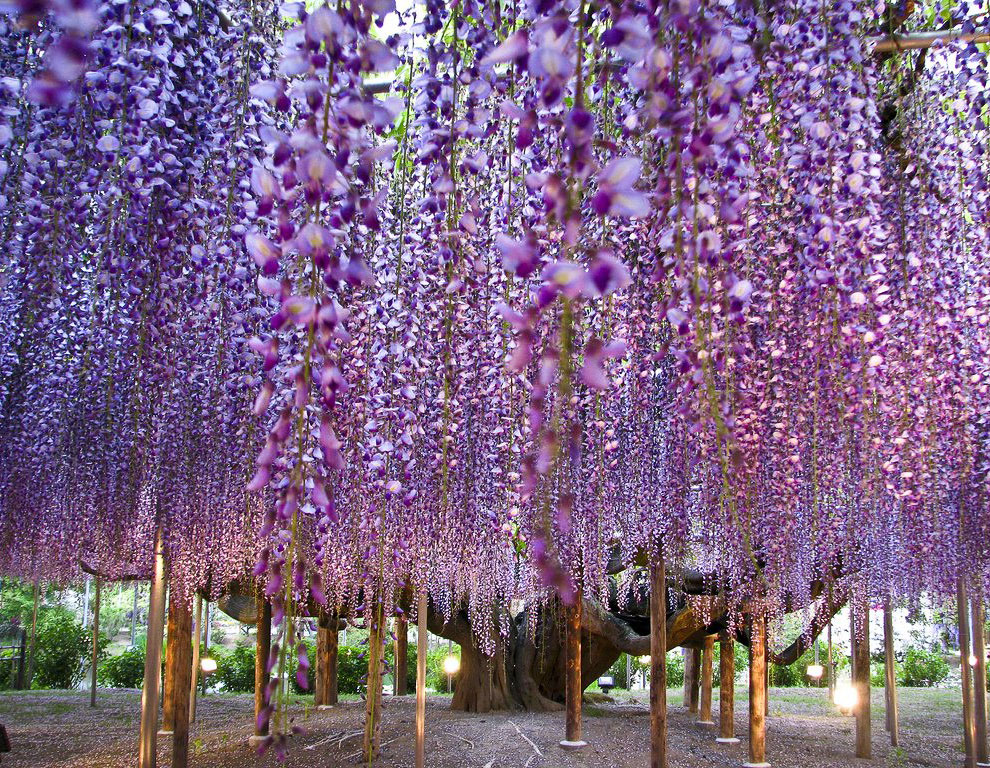 March 2020
March 2020
#13 – Standard Wisteria tree starting to bloom. Presidio Heights, SF, CA. March 2020.
#14 – Blooming wisteria (after) (see #2 before) San Francisco, CA. Mid-March 2020
#15 – White Wisteria Standard. Russian Hill, San Francisco
#16 – Wisteria Blooming. March 2017. San Francisco, CA. Nice detail growing up building.
#17 – Blooming Wisteria. Cannes, France. April 7, 2015 (thx m and d!). Metal support.
#18 – White wisteria wall espalier above garage. San Francisco, CA. Wire and hardware trained.
#19 – White wisteria arc enhancing garage. San Francisco, CA April, 1, 2020.
#20 – Wisteria with metal support structure above garage. San Francisco, CA
#21 – Wisteria wall trained with wire support. San Francisco, CA
#22 – Wisteria early bloom wall espalier. San Francisco, CA. April 1, 2020
#23 – Wisteria wall espalier. San Francisco, CA. Wire support.
#24 – Wisteria in bloom, April. So fragrant and gorgeous.
#25 – Wisteria wall espalier wire trained stucco wall.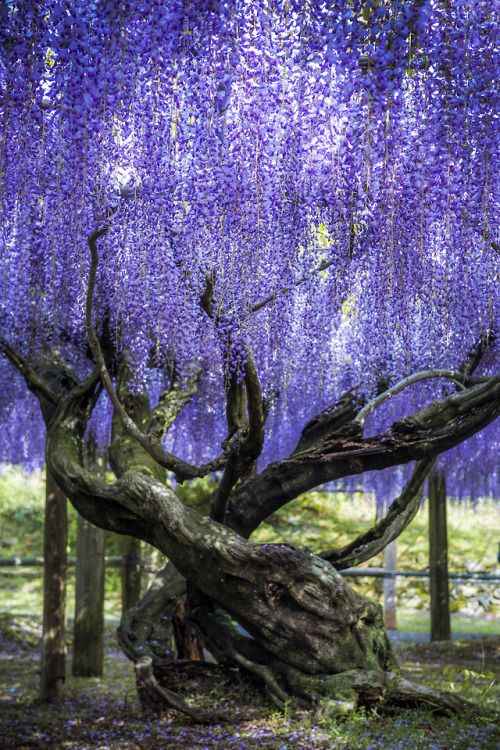 SF, CA
SF, CA
Conclusion
Wisteria’s trunk diameter can reach 8 inches in 20 years so as mentioned above you want to match appropriate support. Take a look at the examples in this post for ideas and inspiration. As long as you’re willing to do the work (or hire), you can see how much beauty wisteria adds. Small gardens with thoughtfully placed + designed-in plants, like wisteria, will make a seasonal statement every year. Hope you enjoyed this post and found it helpful. 🙂
Happy Gardening!
Nicole
Wisteria Trees for Sale | BrighterBlooms.com
Wisteria Trees for Sale | BrighterBlooms.comPurple Wisteria Tree
Starting at $49.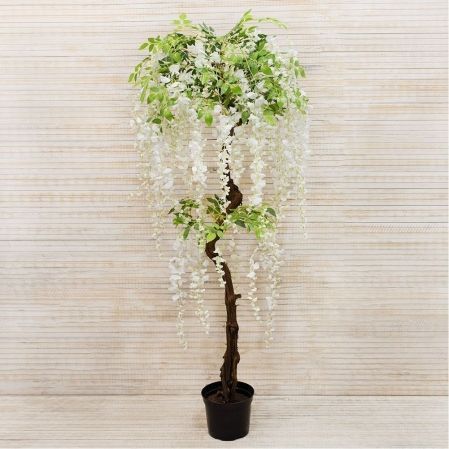 99
99
Up to 33% off
Amethyst Falls Wisteria Vine
Starting at $29.99
Wisteria Trees present a gorgeous new twist on an age-old favorite. Due to increased demand, this clever new creation is flying out of the nursery, and for good reason. There is nothing not to love about a Wisteria Tree--beauty and grace in a compact and easily contained form.
If you love Wisteria, but you've been hesitant to plant it due to its tendency to spread out and take charge, your worries are over.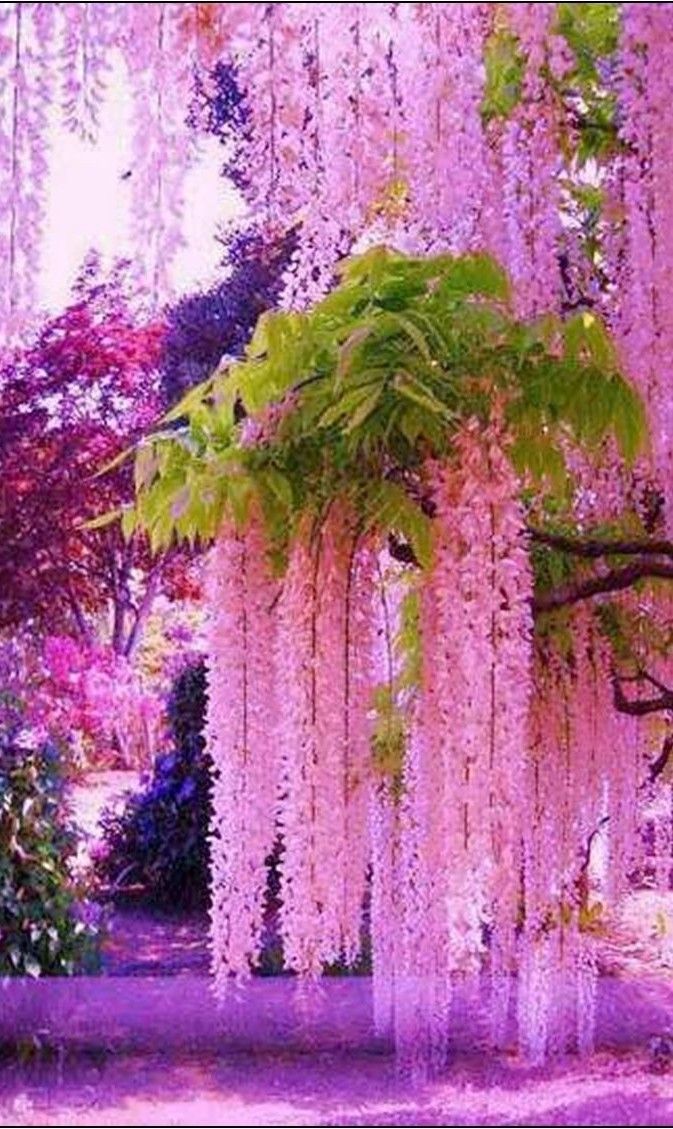 The Wisteria Tree has been masterfully created by grafting a Wisteria vine on top of a standard tree trunk and root system. A small amount of regular pruning is all it takes to maintain desired size and shape, and ensure continued blooming.
The Wisteria Tree has been masterfully created by grafting a Wisteria vine on top of a standard tree trunk and root system. A small amount of regular pruning is all it takes to maintain desired size and shape, and ensure continued blooming.
Reaching mature heights of just 6-8 feet, this small tree fits into any tight situation and is perfectly suited to life in a planter bed amid a mixed border of perennials, such as our Lily of the Nile or Autumn Angel Encore Azalea.
Lovely and graceful year-round, Wisteria trees are especially captivating when elegant spring blooms provide an awe-inspiring landscape that will take your breath away.
Between April and June depending upon your region, fragrant round flowers begin to blanket the Wisteria Tree, occurring in drawn-out cascading clusters. Decadent and deliciously aromatic, you'll want to keep this lovely specimen near your deck or any outdoor living area where people congregate and can enjoy the Wisteria's lightly perfumed blossoms.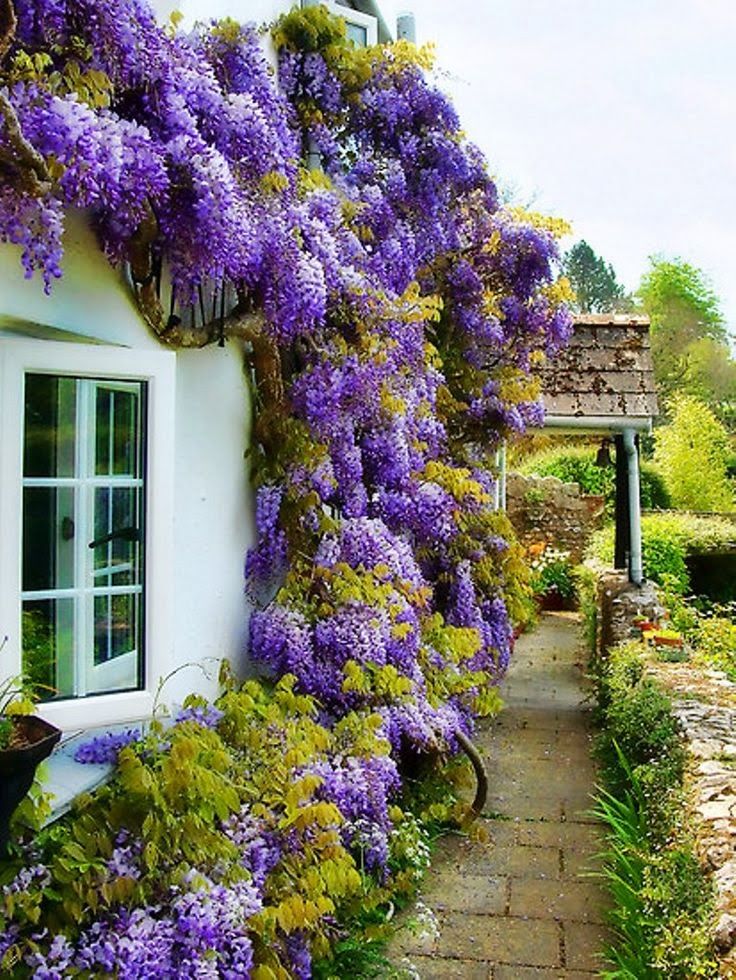
Hardy in zones 4-9, Wisteria Trees adapt well to a wide range of soil types. Drought tolerant, and deer and disease resistant means there's never any need for harmful chemical sprays. This easy to care for plant is simple to maintain. Plant, water and enjoy.
Fast, Reliable Shipping, Straight to Your Door
30 Day Happy & Healthy™ Guarantee
A+ Rating From BBB
very beautiful tree and tips for early care in the photo!
Tables:
- 1 Description of the appearance
- 2 Types of Glycinia
- 2.1 Glycinia Chinese
- 2.2 Glycinia Japanese
- 3 Care and Growing Glycinia
- 3.2 Watering and top dressing
0 9000 9000 9000 9000 9000 9000 9000 9000 9000 9000 9000 9000 9000 9000 9000 9000 9000 9000 9000 9000 9000 9000 9000 9000 9000 9000 9000 9000 9000 9000 9000 9000 9000 9000 9000
0 Branch care and winterization
- 5.
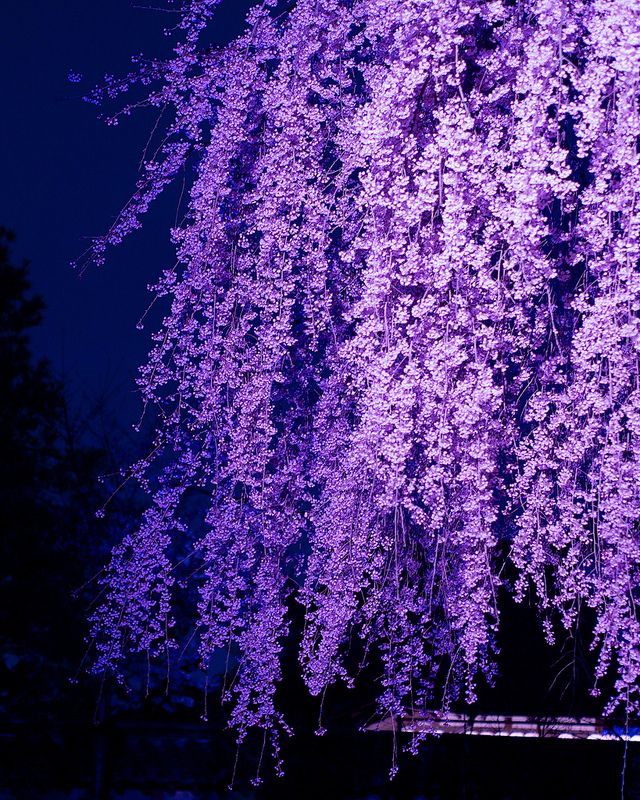 1 Propagation by seed and grafting
1 Propagation by seed and grafting - 5.2 Propagation by layering
- 7.1 Vertical landscaping
- 7.2 Stage Glycinia in winter gardens
GLICINISINESS (Out of translation " sweet") or lat. Wisteria (Wisteria) refers to perennial, beautifully flowering trees.
Belongs to tree vines of the legume family. It grows in areas with a mild subtropical climate. In Russia, the cultivation of wisteria is developed in the south. nine0003
Appearance description
Wisteria reaches a height of 100 to 2000 cm. Young shoots of wisteria have a pubescent light green color. At a more mature age, the shoots become woody and acquire a gray tint.
Glossy, dark green, elliptical foliage with a pointed tip.
Delicately scented white to purple flowers in drooping clusters. Flowering begins in May and continues throughout the summer. nine0003
nine0003
Wisteria fruits are flat elongated beans. Their surface is covered with white fluffy hairs. The color range varies from light yellow to green with a brown tint.
Wisteria species
Chinese wisteria
Of the ten known wisteria species, only two species are common in crop production. Wisteria Chinese, related to vines, grows to a height of up to 20 meters. It begins to bloom almost immediately, after the appearance of foliage. At the end of the season there is a second flowering, but more scarce. nine0003
Chinese Wisteria profusely flowering (Floribunda) differs from the first in larger inflorescences that begin flowering already with a fully leafy plant. This type of Chinese wisteria tolerates temperatures as low as -20C, but insignificant in time.
Japanese wisteria
Japanese wisteria There are several types of plants: Large wisteria, beautiful wisteria and shrub wisteria.
On the basis of large carpal wisteria, breeders have created a species that tolerates low temperatures (up to -40C. ) nine0003
) nine0003
Care and cultivation
Planting wisteria
Wisteria, a plant that does not require much care. It is enough to create optimal conditions for it and it will delight with beautiful flowering all season long. Wisteria is a perennial plant, so you need to carefully choose a place for planting. It should be a well-lit, windless place.
In the first year, wisteria is grown in a container in order to form the skeleton of the plant with a garter and keep it in a cool place in the winter to harden it. nine0003
In the second year, the seedling is planted in a hole 0.5 meters deep. Humus, sand and peat are added to the pit, this mixture provides a sufficient amount of nutrients for the full development of a young plant.
Watering and feeding
Wisteria requires moderate watering, but at the same time the soil should always be moist.
Excessive watering will affect the stagnation of moisture in the soil at the roots, so it is recommended to spray the plant in the heat. Starting in September, watering is gradually reduced to prepare the plant for winter. nine0003
Starting in September, watering is gradually reduced to prepare the plant for winter. nine0003
For abundant flowering and full development of wisteria, fertilizers are periodically applied. Organic, in the form of mullein infusion, about once a week. And about two times a season, a chalky solution, in a ratio of 100 grams per bucket of water.
Branch care and winter preparation
The plant must be pruned in spring. Dried branches are cut off and last year's shoots are shortened for the most abundant flowering. Young shoots are tied up in order to give the branches the right direction. nine0003
An indispensable condition in the care of wisteria is the garter of the vines of the plant. This is necessary so that the branches do not braid the tree trunk during growth, which facilitates the subsequent process of preparing for the winter period.
Preparation of wisteria for wintering begins in September, gradually reducing watering and application of mineral fertilizers.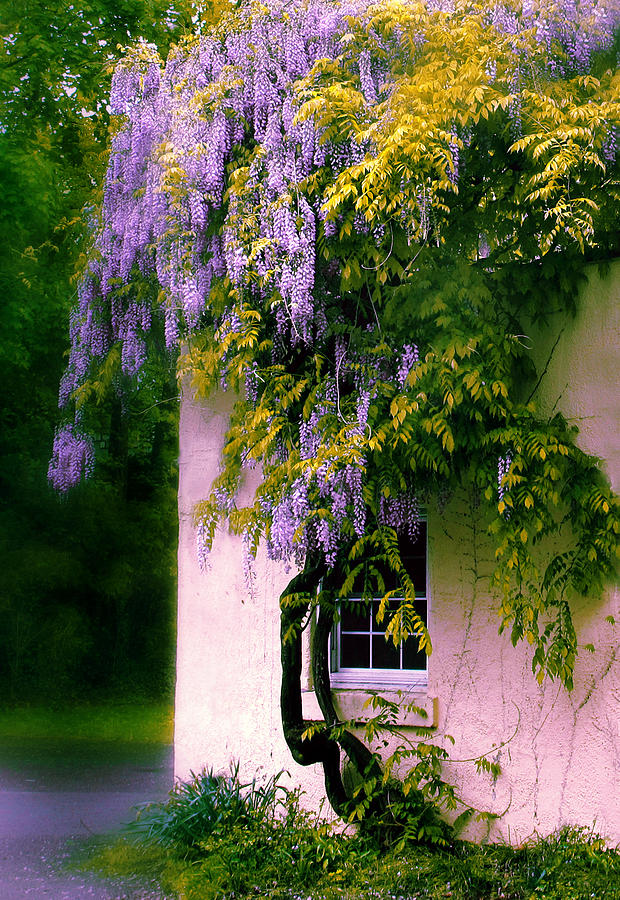
The root system is spudded, the vines tied to the supports are removed and placed on the near-stem shield. From above they fall asleep with dry foliage, spruce branches and cover with a heater. nine0003
Propagation of wisteria
Propagation by seed and grafting method
There are several ways to propagate wisteria, such as: seed propagation, cuttings and dropping and rooting of young shoots of wisteria.
Growing wisteria from seeds is quite difficult, as the seeds may not germinate, and if they do grow, they rarely bloom. The method of grafting a plant is not in demand, as it is not always possible. nine0003
Propagation by layering
The most common method of wisteria propagation is rooting by layering. This is done in the spring, choosing the strongest and healthiest shoot. An oblique incision is made on the future seedling and placed horizontally in a container filled with clay and turf substrate.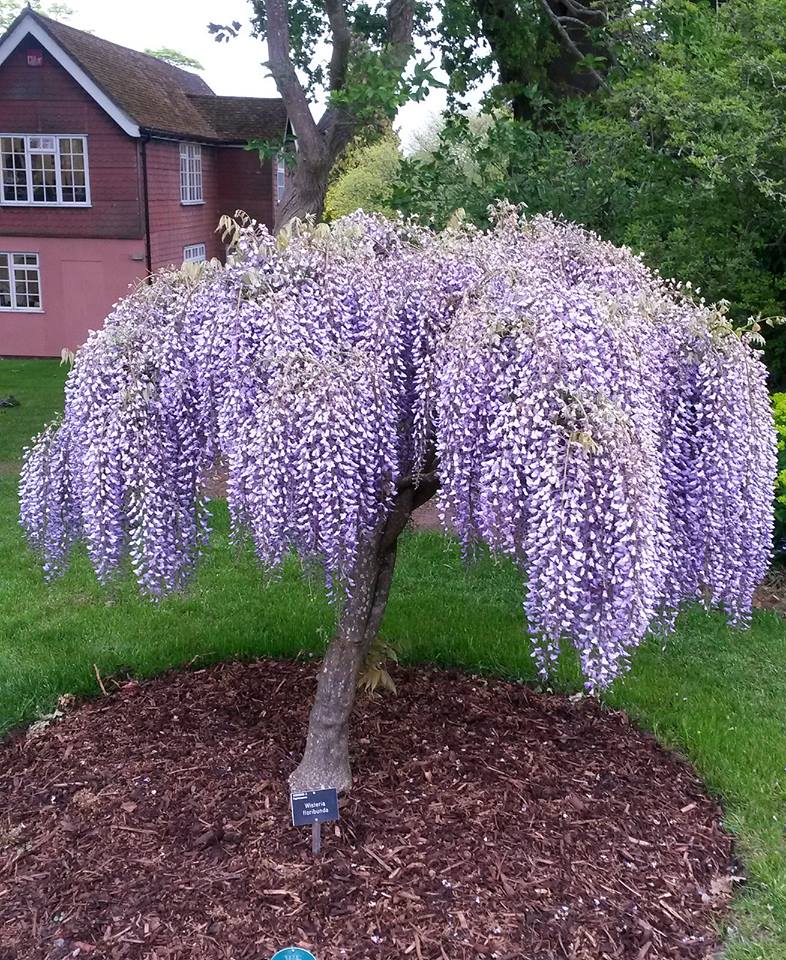
During the season, the cuttings are fed, and by the end of the period it develops a good root system. Separate the seedling from the mother plant the following year, in the spring.
Diseases and pests
Wisteria is one of the few plants that is susceptible to diseases and pests. When treated with axicystides, the plant will avoid attack by aphids, caterpillars, clover mites and leafhoppers.
You should also avoid excessive excess of alkali in the soil, in order to avoid yellowing of the foliage in case of chlorosis. Timely application of iron salts will help to cure this disease.
Decorative value wisteria
Vertical landscaping
Wisteria plays an important role in decorative landscaping. It is used as vertical gardening of arbors and terraces.
Since it belongs to the vines and beautifully wraps its branches around the lattice supports, creating beautiful flowering screens.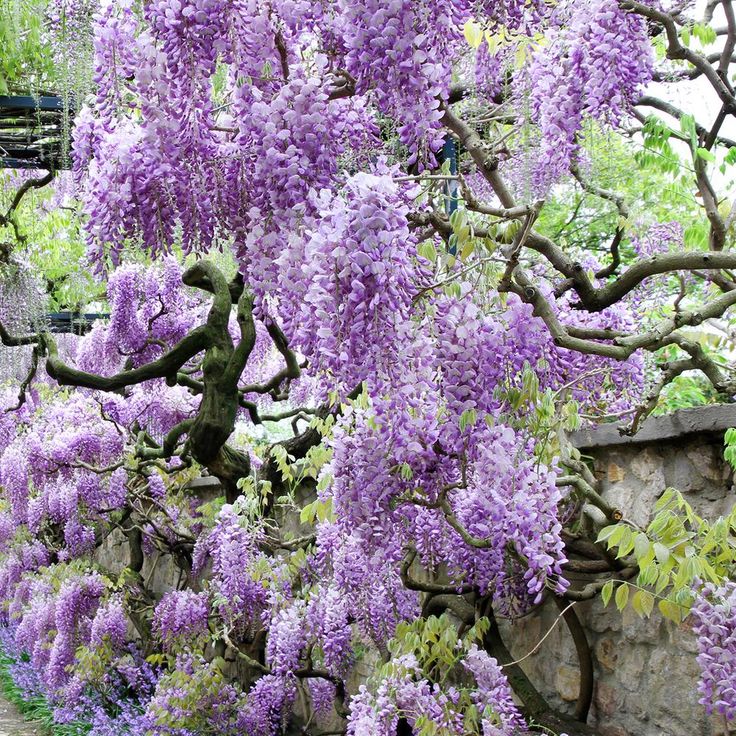
Supports for a plant in such landscaping must be created solid, taking into account the load and growth of wisteria.
Standard wisteria and wisteria in winter gardens
Properly pruned wisteria forms an erect standard tree that will decorate a flower garden or even a small park area.
Also shaped wisteria, planted in a separate planter, will decorate the winter garden. For proper care in such a garden, they maintain a temperature of at least 10 degrees, provide good lighting and moderate watering.
If you follow simple and simple rules in care, wisteria will delight you with a rich and fragrant aroma for a long time. nine0003
Wisteria photo
Wisteria (55 photos) | Growing - Planting
It is impossible to take your eyes off the blooming wisteria. It fills the space with fireworks of various colors and shades - from light blue and pale pink to intense purple and creamy white, which are painted inflorescences in the form of long spectacular brushes, hanging down in a plentiful waterfall. When wisteria blooms, a walk among this heavenly whirlpool of colors resembles a magical dream, where there is no place, no sadness, no sadness. After all, it is not for nothing that they say that being surrounded by her, you seem to find yourself in a real paradise. nine0003
Description
Genus Wisteria (Wisteria) - in Latin Wisteria belongs to the legume family. It is represented by subtropical tree-like plants - high climbing vines.
Translated from Greek, the name of this plant means the epithet "sweet". It really fills the surrounding atmosphere with a pleasant sweet aroma throughout the entire flowering stage.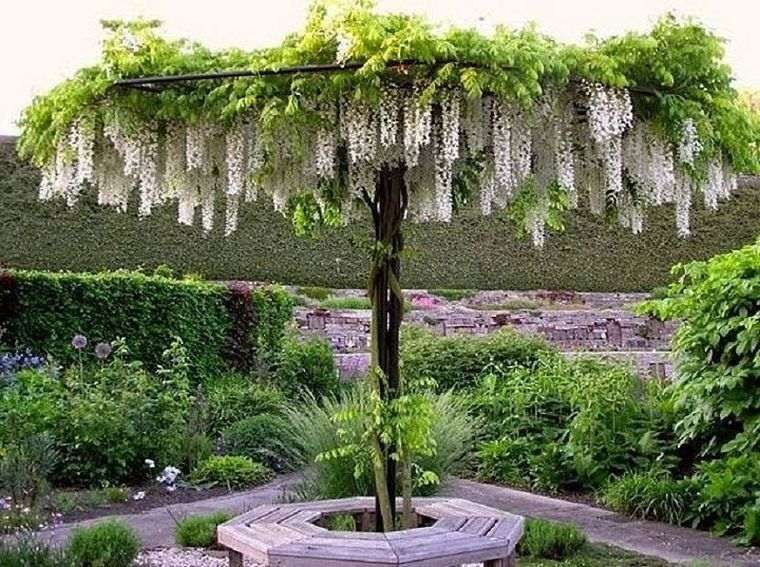 This is one of the most beautiful flowering representatives of the flora.
This is one of the most beautiful flowering representatives of the flora.
Wisteria is the official name. It is established by the International Code of Botanical Nomenclature. It comes from the name of Professor Caspar Wistar, who studied at the turn of 18-19centuries of anatomy at the University of Pennsylvania.
Beautiful garden with blooming wisterias in different colors
Bird feeder nestled in the canopy of the wisteria
Chinese wisteria by the pond will add color to your garden
Wisteria is a deciduous tree. Its height can reach twenty meters. As the tree grows, a majestic crown with a diameter of up to eight meters is formed from drooping long branches.
Mature wisteria tree has different shapes. It can be a tree with a powerful trunk or a weaving vine that gradually captures the surrounding space of your garden. nine0003
Unpaired, light green wisteria leaves are large, reaching a length of 30 cm. The fluff covering the leaf plates of young plants gradually disappears, making their color more saturated.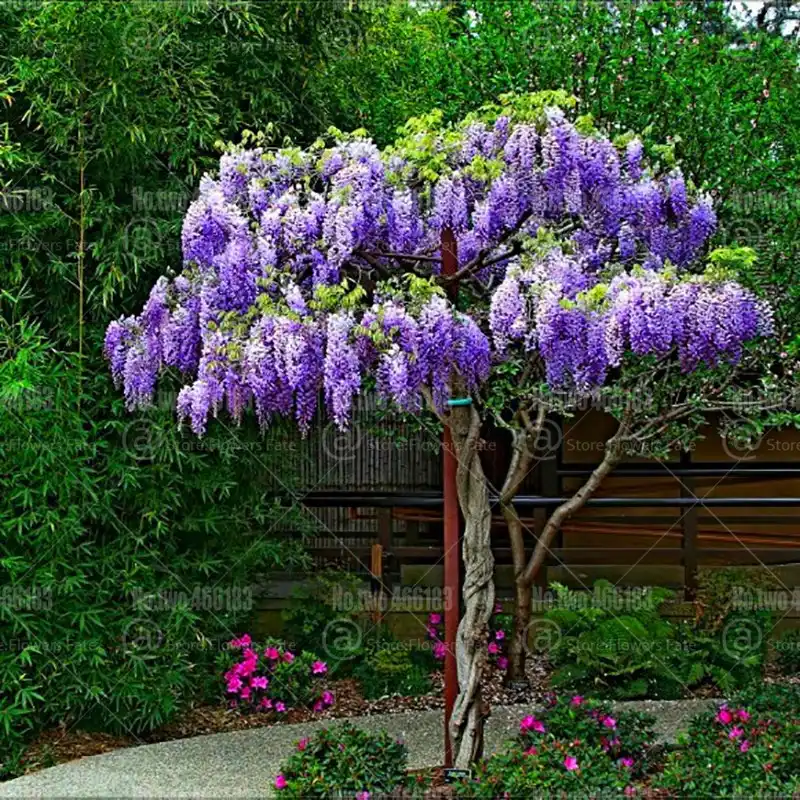
Blue, purple, white, pink, lilac wisteria flowers are united in racemose inflorescences resembling grapes, the length of which varies on average from 25 to 50 cm. Although there are varieties of wisteria with inflorescences up to 70 cm long.
Wisteria with lilac and soft purple color is the most popular for growing in our latitudes
Elegant and incredibly beautiful wisteria in lilac color
The natural habitat of wisteria is China, where it grows in the provinces of Sichuan and Hubei. This tree is widely cultivated, but it shows the greatest decorative effect in humid subtropics. In our latitudes, it takes root well in the Crimea and in the southern territories of Russia.
With proper organization of planting and care, the subtropical beauty can be successfully cultivated in the central Russian zone, if frost-resistant varieties are selected. For horticulture, varieties with purple and white flowers are bred.
For indoor floriculture, wisteria is grown in the form of bonsai. nine0003
Starting to bloom in the first spring months, the wisteria tree enchants with a cloud of colorful flowers almost until the beginning of autumn, after which the ripening beans are used as a seed.
Popular varieties of wisteria in Russia (photo)
Of the nine types of wisteria in our temperate climate, four varieties have been adapted with different degrees of frost resistance.
Chinese wisteria (Wisteria chinensis)
Wisteria native to China, reaching twenty meters in height, has a dense crown. Terry flowers have a predominantly delicate lilac color, but sometimes a white tint is also found.
This magical tree blooms throughout the summer season. Inflorescences appear in parallel with awakening leaves. In warm climates, it is able to bloom again at the end of summer.
The feathery leaves, which create an openwork halo around lilac inflorescences up to 40 cm long, give additional decorativeness to the plant.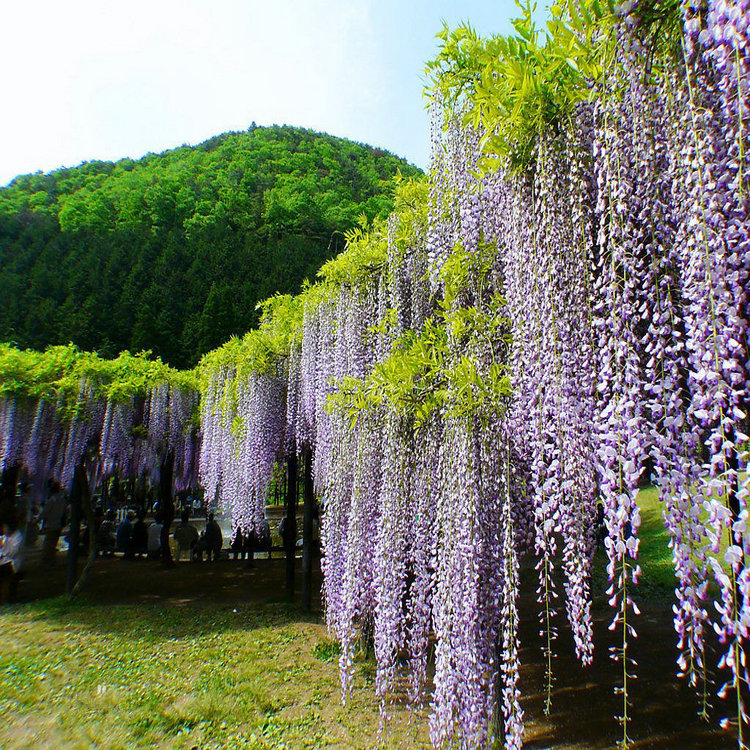 nine0003
nine0003
In the winter season, Chinese wisteria is able to withstand a short-term drop in temperature to 20 degrees below zero.
The Chinese wisteria tree sometimes strikes the imagination with its size and beauty
Large wisteria (Wisteria macrostachys)
The natural habitat of this variety of wisteria is North America. The frost-resistant variety Blue Moon is especially appreciated. The name translates as "blue moon". This type of vine is more adapted to frosty winters, as it is able to survive even at -40C. nine0323
The maximum height is eight meters. The leaves are dark green in color. The flowers are predominantly blue or purple. The length of the inflorescences varies from 20 to 30 cm. They appear in June and are fragrant with a delicate aroma for three weeks.
Beautiful wisteria tree under the windows of the house
Vibrant wisteria (Wisteria floribunda)
This luxurious type of wisteria grows in Japan. With an average height of 10 meters, it impresses with the size of leaf plates, having a length of up to 0.4 meters, and inflorescences - up to 0.7 meters. nine0003
Blooms in late spring when the leaves have already appeared. Reddish, violet-blue, white, purple flowers open gradually, starting from the bottom of the brush.
Flowering ends by mid-June. Under favorable climatic conditions, it can please by August with the reappearance of inflorescences.
Wisteria is successfully cultivated even in those Russian regions where the winter temperature does not fall below -25C.
White wisteria with lush inflorescence
Japanese-style garden
Shrub wisteria (Wisteria frutescens)
This type of wisteria with drooping branches can grow up to 12 meters. The petals are purple-blue. Can be used as a tub culture.
Graceful clusters of wisteria captivate at first sight
Wisteria - cultivation and propagation
There are many ways to grow wisteria on your own in a summer cottage.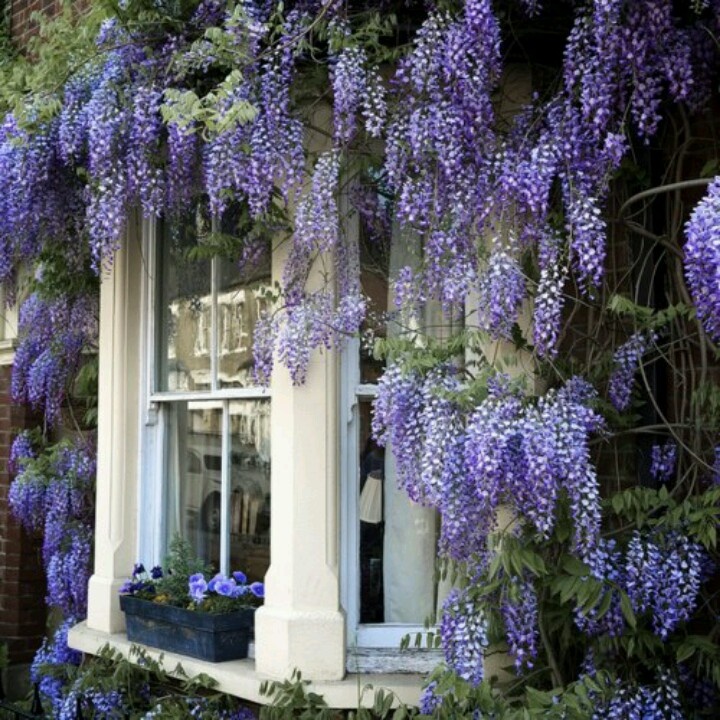 The most practical and effective methods of which are:
The most practical and effective methods of which are:
- Seed
- Vegetative
Seed breeding
Wisteria seed breeding is used quite rarely, since the young seedling practically does not acquire the varietal characteristics of the mother plant.
Seed material is purchased in specialized salons or collected independently if there are adult plants on the site.
Soil preparation
At the beginning of winter, prepare the soil substrate by mixing soddy soil, leaf humus and fine sand in equal volumes. You can purchase a ready-made mixture oriented for exotic representatives of the flora. The resulting soil is poured into containers. nine0003
Sowing activities are carried out in several stages:
- The seeds are pre-filled with a solution of a growth stimulator diluted according to the instructions and kept there for about three hours.
Lay out on a moist soil surface. - A thin layer of sand is spread on top, which should slightly cover the seeds.
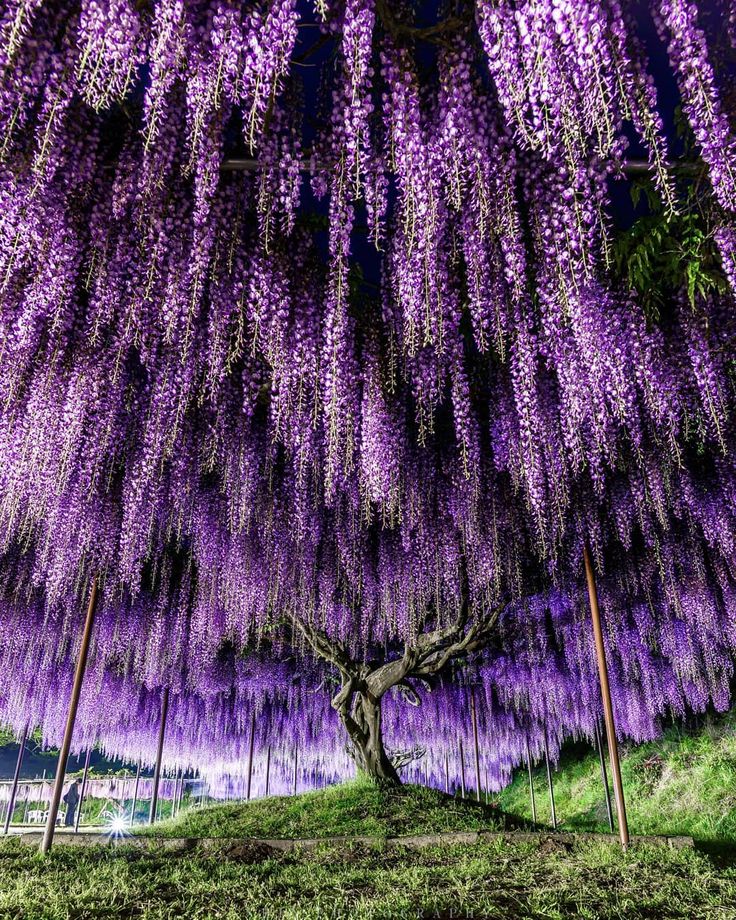 Then they cover it with a transparent film and place a miniature greenhouse in a warm place without lighting with a temperature of at least twenty degrees. nine0006
Then they cover it with a transparent film and place a miniature greenhouse in a warm place without lighting with a temperature of at least twenty degrees. nine0006 - Next, carry out daily airing and, if necessary, spray the soil with water, preventing it from drying out. Shelter is removed on average after a month, when active spitting of seeds begins.
- After two weeks, move the container to the windowsill, providing protection from the midday burning sun. Sprouts at this point are regularly irrigated with a spray gun, but I avoid strong waterlogging that can cause rot of young stems.
- When the third leaf develops, the shoots are ready for transplanting into local containers, in which a layer of drainage is arranged at the bottom and the soil substrate is poured. In the container, the soil is watered and the seedlings are carefully removed, keeping a clod of earth. Immediately planted in prepared containers, after which the transplanted plants are watered with a weak solution of potassium permanganate.
 nine0006
nine0006
When warm spring weather sets in, the crops begin to harden off, taking the pots to the veranda or balcony, where they should be kept for two hours.
Some varieties of wisteria have long flowering
Flowering wisteria has a pleasant and light aroma
Lilac clusters beautifully decorate the roof of the gazebo
Rainbow colors of wisteria
Vegetative propagation methods Most commonly used for plant propagation:
- Cuttings
- Propagation by layering
- Root graft
Cuttings
The simplest, but no less effective way of growing wisteria is cuttings. It is carried out as follows:
- In autumn, a healthy strong branch is selected and cuttings are cut from 15 to 20 cm long. For storage, they are placed in a cellar, sprinkled with moist soil.
- In spring, for rooting of growth, the cuttings are planted in a greenhouse under a film, having previously kept them in a stimulator.
 nine0006
nine0006 - In warm weather, the cuttings can be placed directly in open ground. To do this, the selected area with light fertile soil is dug up well, weed roots are removed from it. Next, the surface is leveled with a rake and the prepared cuttings are deepened into it by several centimeters. From above, each copy is covered with glass jars. You can use plastic bottles with cut necks for this purpose.
Growing wisteria from cuttings
Important! The average survival rate of wisteria with this method is less than 50%.
Propagation by layering
This method is the most reliable and produces strong, viable planting material.
- In early spring, before the leaves appear on an adult vine, a healthy shoot is picked up, located close to the soil surface. With a sharp knife, an oblique cut is made from the underside of the branch (approximately in the middle). It is recommended to spray the cuttings with a stimulant, for example, indoleacetic acid , which increases the likelihood of rooting.

- A long container is filled with a mixture of loamy soil and soddy soil. Layers are laid by placing an incision on the surface of the substrate. Another layer of soil mixture is poured on top so that only the crown remains free. The branch is fixed by sticking wire staples on top.
- During the spring season, as the substrate dries out, it is abundantly watered, while an adult plant does not like waterlogged soil very much. Usually, a strong root system appears at the cuttings by the beginning of autumn, but they are separated from the mother tree and planted in the allotted place only in the spring. nine0006
An example of plant propagation by layering
Important! Layers can be rooted without the use of containers, by fixing them directly in the ground. Both methods are quite effective and usually give a positive result.
Root grafting of wisteria
If, after sowing the seeds, it was possible to obtain viable seedlings that took root well in the open field, but lost their varietal characteristics, a root grafting can be carried out.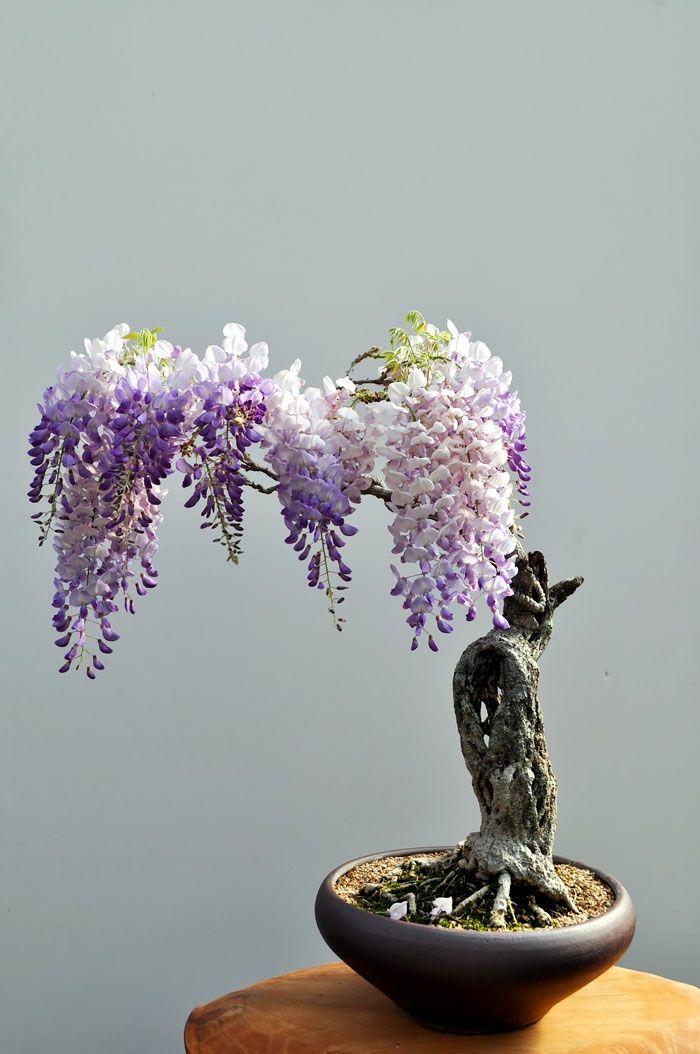
How to root graft wisteria:
- Dig up young plants in autumn after all the leaves have fallen. The root system is separated and placed in a box, sprinkled with sand. The box is placed in the basement, where it should be until the middle of winter.
- In January, the box is moved to a warm room, giving it the opportunity to warm up for another two weeks.
- The scion is cuttings harvested from varietal wisteria with two buds. The cut should be 30 mm below the kidney. A root with a diameter identical to the scion is selected and a cut is also made at its top with a sharp knife. The stock is tightly combined with the scion and fixed with adhesive tape. nine0006
- It remains to bury the roots in the soil substrate, previously poured into the container. The grafting site must remain above the surface.
- Top the container with a transparent film to ensure the necessary humidity. A miniature greenhouse must be ventilated daily. The substrate is moistened as needed.
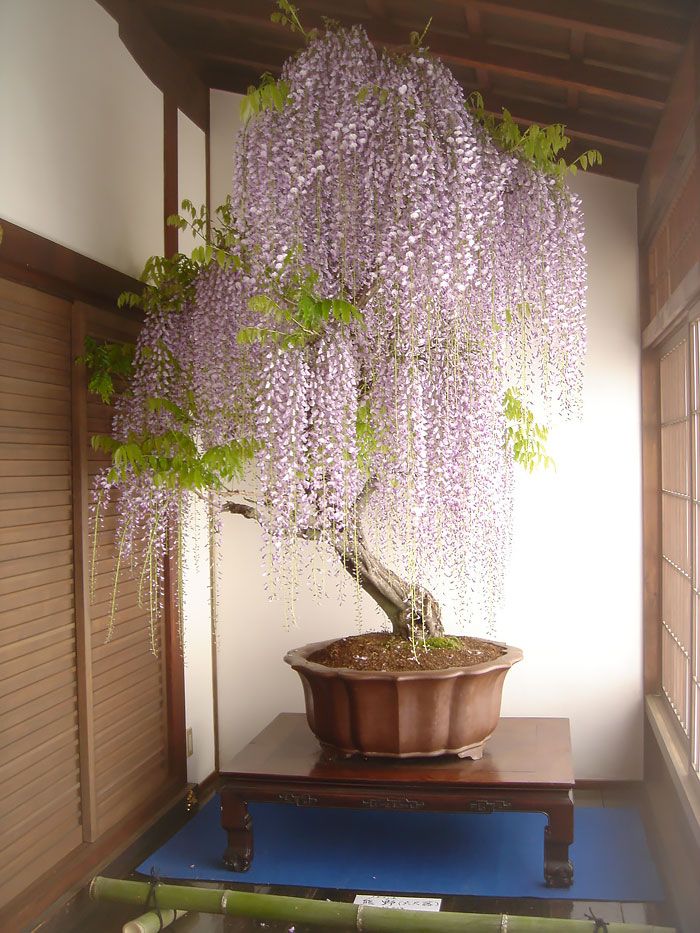 Evidence of a good survival rate of the grafted cuttings will be the development of shoots from axillary buds after about a month.
Evidence of a good survival rate of the grafted cuttings will be the development of shoots from axillary buds after about a month.
Root scion wisteria
As soon as the shoots sprout, the shelter is removed. The grafted seedling continues to be cared for for about three more weeks. The strengthened wisteria is transplanted to the allotted place in open ground.
Rules for planting wisteria in the ground
Having grown seedlings on your own or having prepared rooted cuttings, you need to transplant them to the site. Planting material enriched with nutrients can be purchased from specialized nurseries.
Important! For planting wisteria, an open place is chosen to ensure its sufficient illumination. At the same time, it is necessary to provide protection against strong winds. Wisteria feels good next to a gazebo, terrace or veranda, on the frame of which branches can be distributed to create a great composition. nine0003
Luxurious wisteria near the veranda
On hot days, in the dense and shady crown of wisteria, you can easily hide from the scorching sun
You can beautifully decorate your site by planting a wisteria tree on the front side of the fence
The soil for planting wisteria requires loosening, light and slightly alkaline.
If the soil is acidic in the courtyard, lime or crushed chalk must be added. When digging, rotted compost is added.
It is advisable to choose a place without a close occurrence of aquifers, since in conditions of stagnant water, wisteria will grow poorly and may die. nine0003
When is the best time to plant wisteria
Planting is carried out in the spring season, when night frosts stop. Planting pits are being prepared on the dug-up site, the main guideline for which is the size of the root system along with the earthen clod.
Important! The dimensions of the hole should be twice the size of the root of the seedling. Gravel is poured to the bottom as drainage, if it is not available, you can put fragments of brick or small cobblestones. A little soil is poured on top.
The soil in the seedling pot is moistened and the plant is carefully removed without shaking off the earth from the roots. The seedling is carefully placed in a hole and the voids are filled with soil mixed with a teaspoon of complex mineral fertilizer.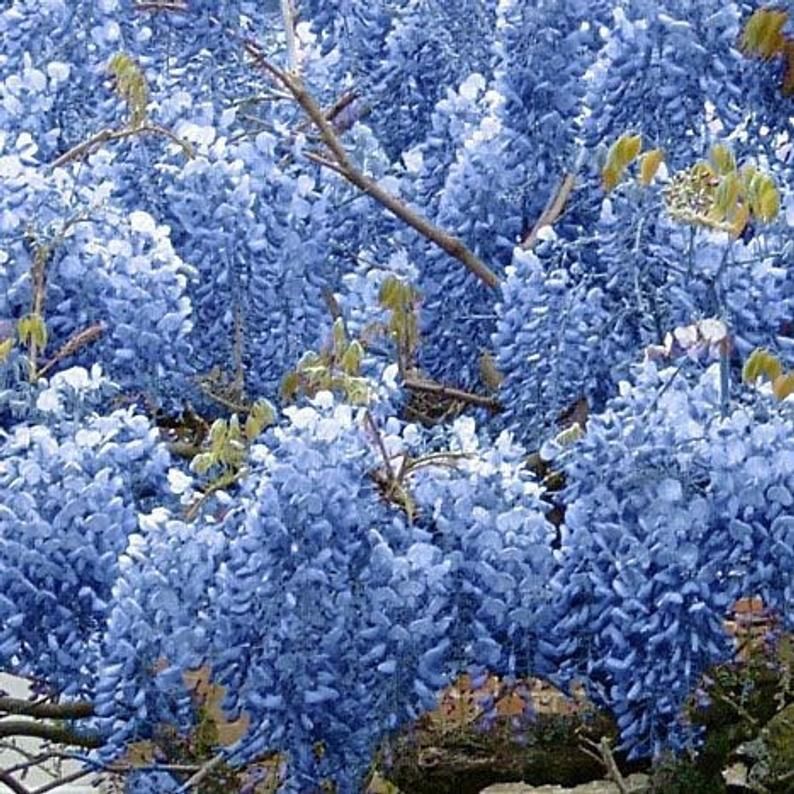 Each layer of earth is carefully compacted with a wooden block.
Each layer of earth is carefully compacted with a wooden block.
How to care for wisteria
Caring for wisteria involves the implementation of standard agricultural practices, taking into account some features.
Watering is carried out taking into account weather conditions. If the spring-summer season is dry, then the procedure is carried out regularly, spilling the soil abundantly. It is necessary to ensure that moisture is completely absorbed into the soil without stagnation. nine0003
Important! Excessive drying of the soil surface should be avoided, which should be slightly damp before the next watering. Starting in October, the vine is preparing for a dormant period, so the interval between waterings is lengthening.
Relaxing under the beautiful and majestic wisteria branches is a pleasure
Pale pink inflorescence looks especially elegant
By nailing a lattice to the wall and tying young wisteria branches to it, you can create an excellent composition with the effect of a tree crawling along the wall
Wonderful garden with beautiful trees
The soil under the plant should be loosened and weeds removed.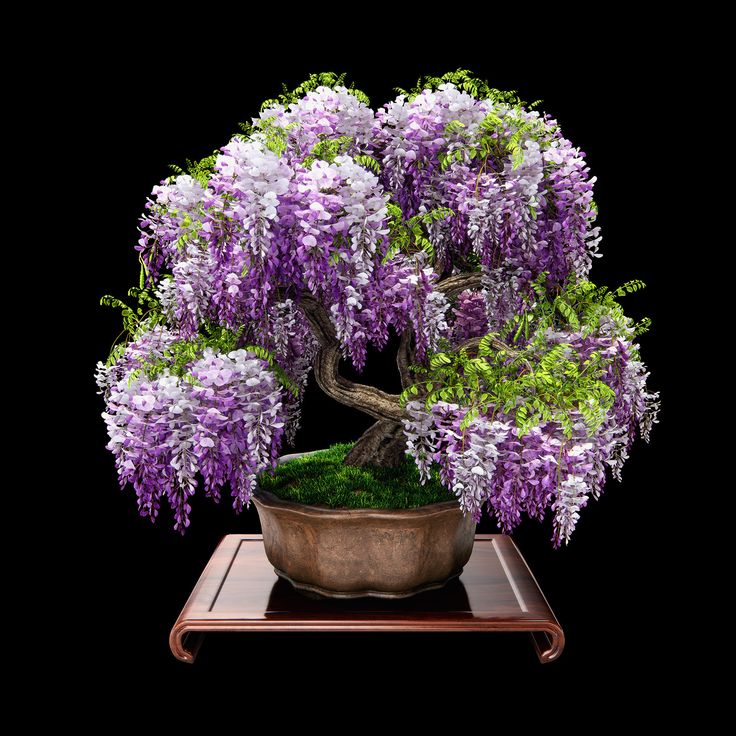 To retain moisture, lay a layer of mulch from sawdust or peat. During the growing season, wisteria is fed once a week with a mineral complex, dissolving 10 grams of fertilizer in ten liters. This volume is calculated per square meter. Can be alternated with organics.
To retain moisture, lay a layer of mulch from sawdust or peat. During the growing season, wisteria is fed once a week with a mineral complex, dissolving 10 grams of fertilizer in ten liters. This volume is calculated per square meter. Can be alternated with organics.
Pruning is done to stimulate the development of inflorescences at the end of May, cut to a length of about 30 cm. Last year's lateral shoots. In August, fresh growth is still cut into four buds. When spring comes, once again last year's growth is cut into three buds. nine0003
Dwarf wisteria will decorate a small garden
An original arch of wisteria inflorescences
Pink wisteria is a favorite tree of summer residents and gardeners
In late autumn, wisteria is prepared for wintering. To do this, the near-stem circle is loosened and the plant is highly spudded. Mulch is placed on top. Shoots are removed from the supports. They carefully wrap the trunk, cover with leaves. Covering non-woven material is placed on top.